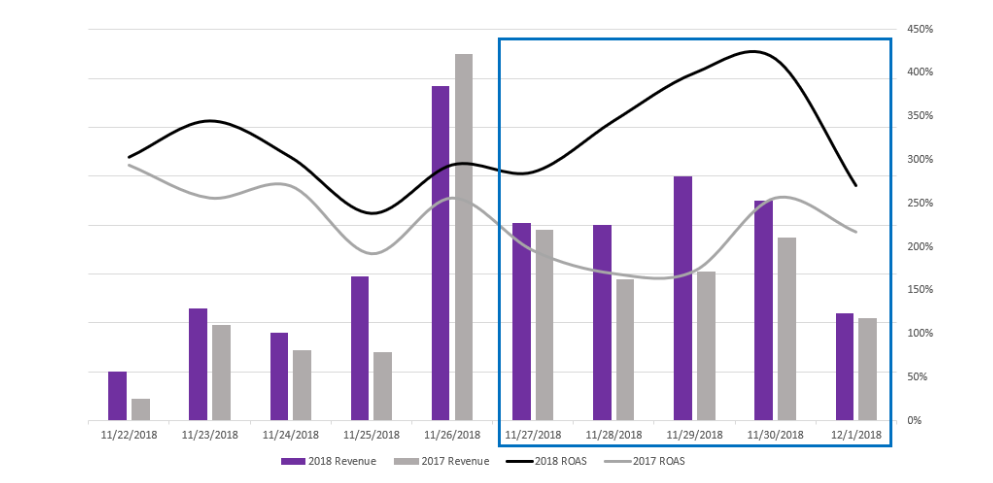Google Seasonality Adjustments: What You Need to Know


Google Seasonal Adjustments first debuted in the second half of 2018 as a beta across Search campaigns.
Fast forward to Holiday 2019, this tool is now available across Search, Display and Shopping campaigns. While the adoption of Smart Bidding has increased tenfold over the past two years across advertisers, being able to directly influence the strategies was sorely missed.
After extensive testing within Tinuiti across a variety of clients spanning different industries, we found Seasonality Adjustments to provide value to account and Smart Bidding strategies.
From influencing short sales and single shopping holidays like Cyber Monday, or if your client is anticipating softness in performance, this tool should only help make these days easier to manage.
Google’s semi-new Seasonality Adjustment is a tool that is used to help influence Smart Bidding strategies of expected changes to CVR for future events.
These adjustments can be used to inform the strategies you are utilizing, of future positive or negative changes to performance.
This new tool is a needed lever for teams to work with as Google’s machine learning becomes more powerful and more relied on. Teams are now able to directly influence Smart Bidding strategies, marking the first time Google has allowed this aside from typical target adjustments.
In the past, in order to change or influence any Smart Bidding strategy in your account, account managers would need to change the strategy’s target for any type of expected change to performance.
This would be implemented on the day of, manually, across all strategies and portfolio your account had set up. With Seasonality Adjustments, your account teams can plan for this well in advance, and schedule the system to account for these expected changes on specified dates and times.
Below is one example of a Tinuiti account team that implemented Seasonal Adjustments to their Smart Bidding campaigns last year during Black Friday and Cyber Monday.
After reviewing prior year performance for these shopping holidays, the account team knew there would be a large increase in CVR for these two days.
In order to maximize as much revenue as possible, the teams implemented Seasonal Adjustments to increase expected CVR during these two days and were able to scale their strategies up to beat client goals.
Another Tinuiti account team recognized the days immediately after Cyber Monday trended poorly last year, and needed to influence Smart Bidding.
Account teams informed the bid strategies being used that CVR was expected to decrease during these days anywhere from 20-35% across categories. After implementing Seasonal Adjustments the account ROAS and CVR both improved YoY, and due to better efficiency, the team was able to invest more in the areas that were performing well to exceed client goals.
With Seasonal Adjustments at play, ROAS was up 46% during this time frame YoY, and revenue was 22% higher.
It is recommended to use Seasonality Adjustments for any day(s) where the CVR of your bid strategies will change by more than 30%, within a 72-hour time frame.
Seasonal Adjustments can be used for longer time frames such as up to 7 days, but as you extend the time frame, regular adjustments to your team’s Smart Bidding targets are preferred.
One important thing to note about this tool is that each time you set up a Seasonal Adjustments, those specific dates are then not factored into your Smart Bidding strategy’s look-back window.
Why?
Because your team is telling Google’s A.I. a big change in performance is going to occur outside of the norm, so treat these days differently than typical performance.
As Smart Bidding becomes the norm across your Google campaigns, Seasonal Adjustments need to be leveraged whenever there are expected noticeable shifts in CVR to your program.
Seasonality Adjustments has allowed teams to act smarter and better plan for holidays and sales, without altering the performance to your program afterward.
It is important for teams to consider the following steps when setting up seasonal adjustments:
Want to learn more?
Google To Sunset Accelerated Ad Delivery
Google Extends Same-meaning Close Variants To Phrase And Broad Match Modifiers
